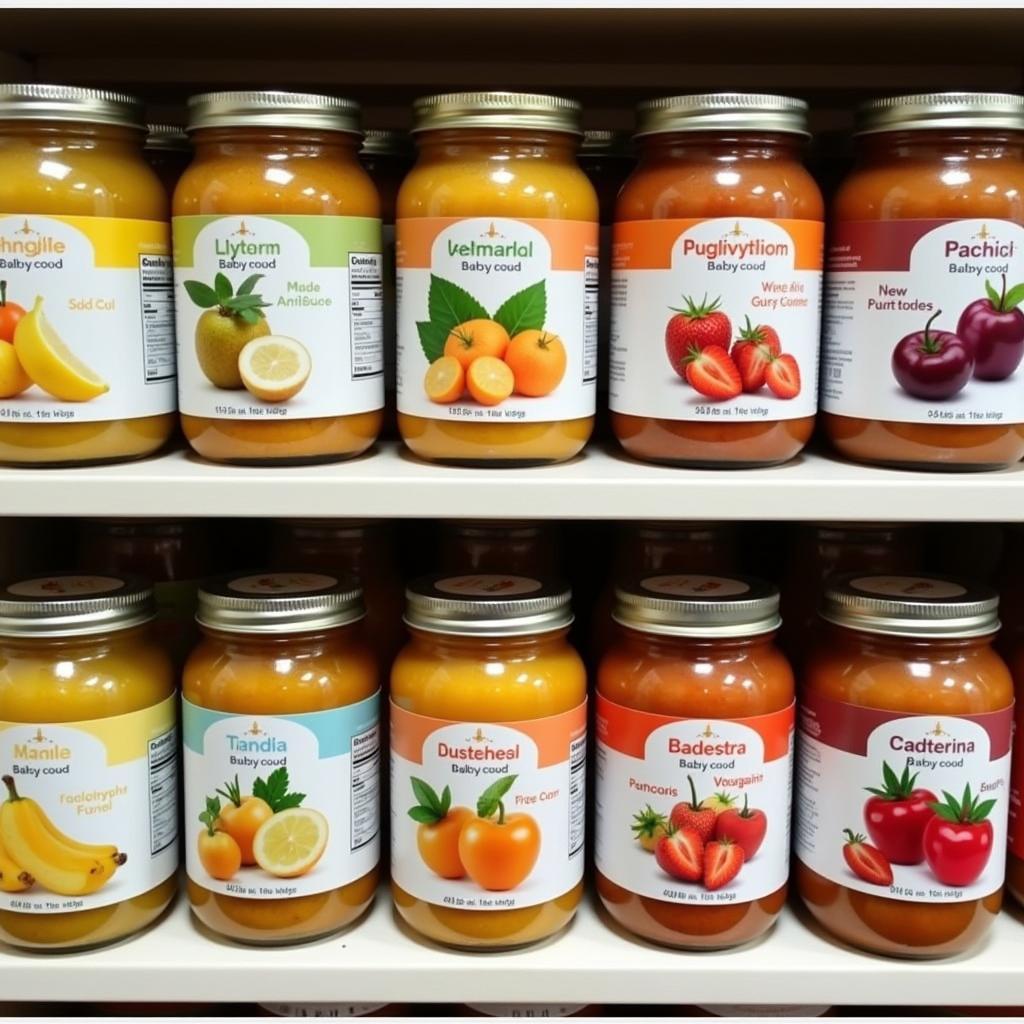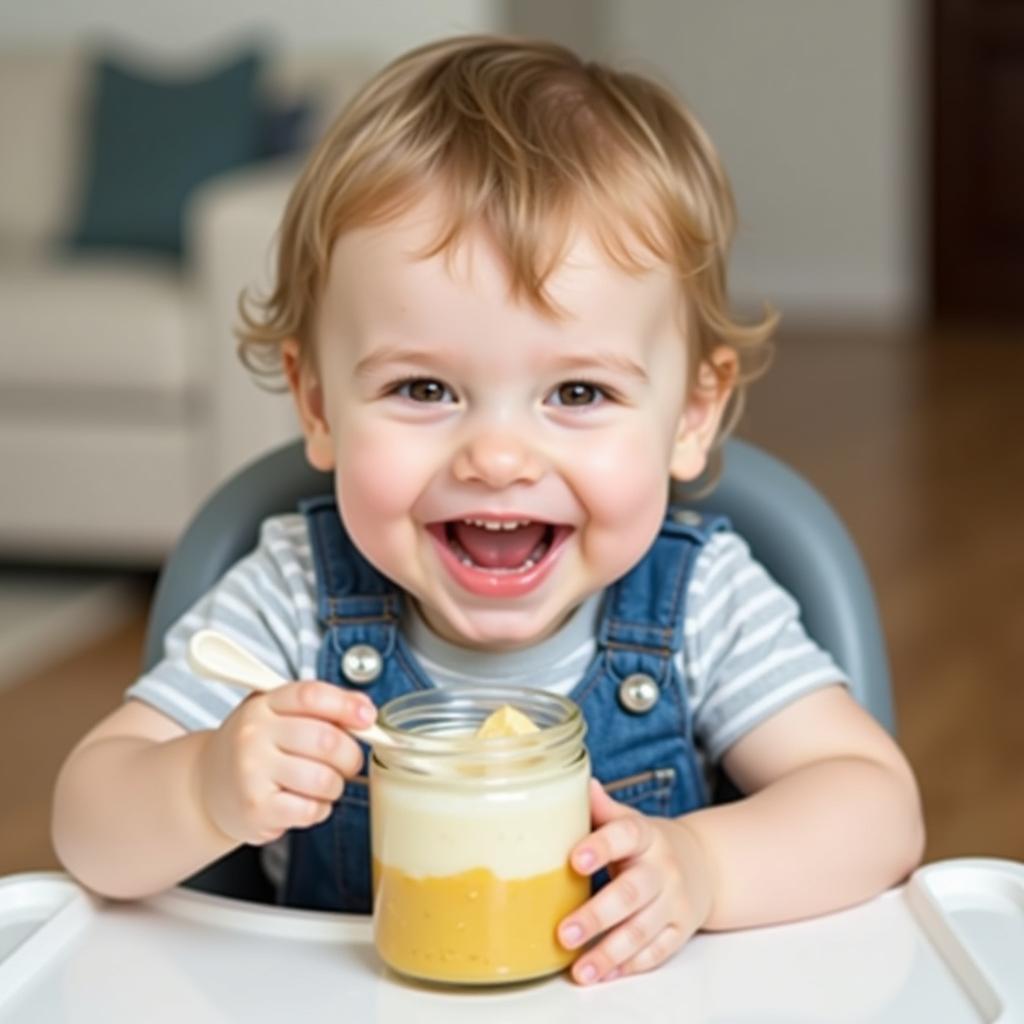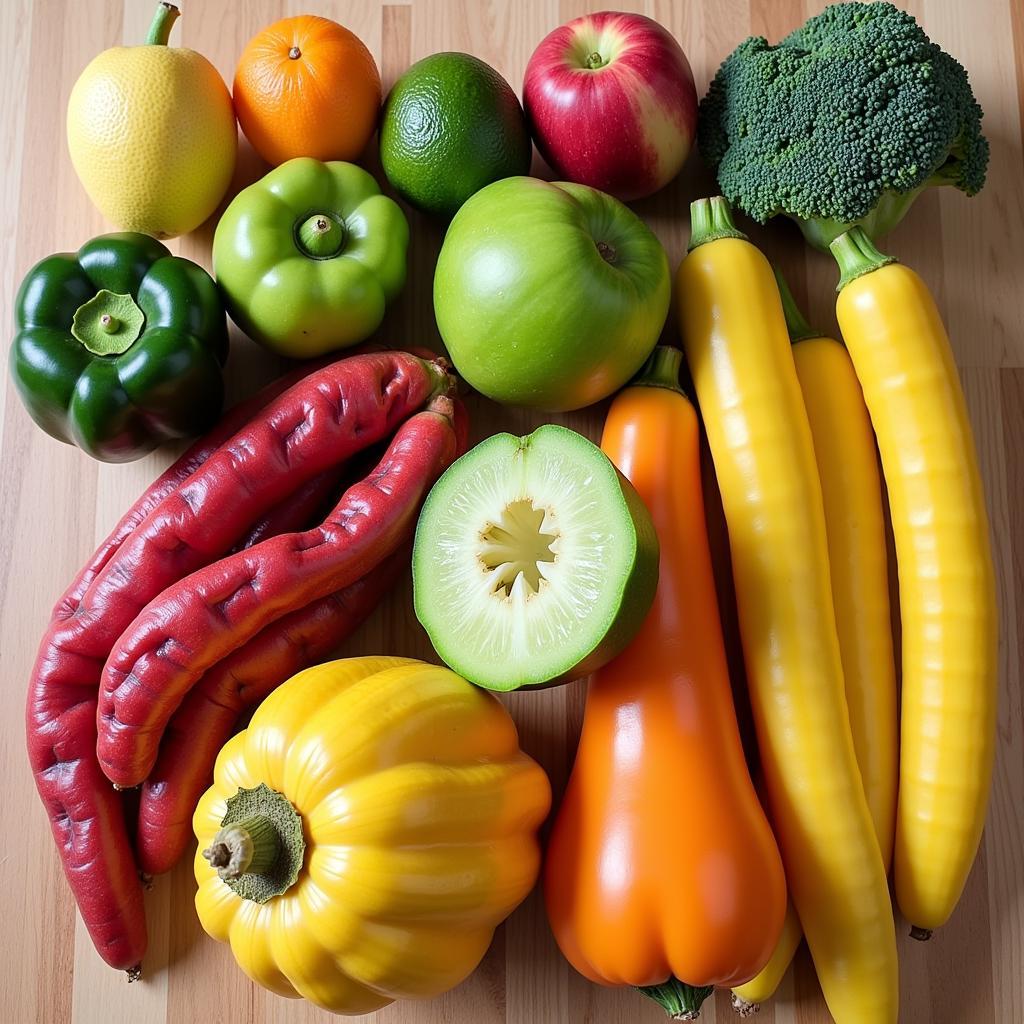Navigating the world of baby food can feel overwhelming, especially when it comes to finding the best Organic Baby Food Jars. You want what’s best for your little one – pure, nutritious food free from harmful chemicals. But with so many options lining the shelves, how do you make the right choice?
What Makes Organic Baby Food Jars Different?
Organic baby food jars differ from conventional options in a few key ways. The biggest difference? The farming practices. Organic farming prohibits the use of synthetic pesticides, herbicides, and genetically modified organisms (GMOs). This means:
- Fewer Pesticides: Organic farming relies on natural pest control, minimizing your baby’s exposure to potentially harmful chemicals.
- No GMOs: Organic certifications prohibit the use of genetically modified ingredients, offering peace of mind for parents concerned about GMOs.
- Sustainable Practices: Organic farming prioritizes soil health and biodiversity, contributing to a healthier planet for your little one.
 Variety of Organic Baby Food Jars
Variety of Organic Baby Food Jars
Deciphering the Labels: What to Look for
Choosing the right organic baby food jar starts with understanding the label. Here’s what to keep an eye out for:
- Certified Organic Seal: Look for a trusted organic certification, like the USDA Organic seal, which ensures the product meets strict organic standards.
- Ingredient List: A shorter ingredient list is generally better. Look for recognizable whole foods and avoid added sugars, salt, and artificial flavors or colors.
- Stage and Age Appropriateness: Ensure the food aligns with your baby’s developmental stage and age recommendations.
- Nutritional Information: Pay attention to the calories, fat, protein, and vitamins per serving to make sure it meets your baby’s nutritional needs.
Exploring Flavor Palettes: From Single-Ingredient to Adventurous Blends
Organic baby food jars cater to every stage of your baby’s palate development:
- Stage 1 (4-6 months): Smooth, single-ingredient purees like banana, avocado, or sweet potato introduce your baby to new flavors and textures.
- Stage 2 (6-8 months): Slightly thicker purees with simple combinations, like pear and spinach or apple and blueberry, add variety.
- Stage 3 (9+ months): Chunkier textures and more complex flavor combinations, such as lentil and vegetable stew or chicken and quinoa, prepare your baby for table food.
 Baby Enjoying Organic Baby Food
Baby Enjoying Organic Baby Food
“When introducing new foods, it’s crucial to offer one new ingredient at a time,” advises Dr. Sarah Thompson, a pediatrician specializing in infant nutrition. “This helps you monitor for any potential allergies or sensitivities.”
Beyond the Basics: Factors to Consider When Choosing Organic Baby Food Jars
While organic certification and ingredients are paramount, other factors play a role in selecting the best baby food jars:
- Packaging: Glass jars are reusable and recyclable, making them an environmentally friendly option. However, BPA-free pouches offer convenience for on-the-go feeding.
- Brand Reputation: Opt for reputable brands known for their commitment to quality, transparency, and ethical sourcing practices.
- Price Point: Organic baby food jars tend to be slightly pricier than conventional options. Consider your budget and explore different brands to find affordable choices.
Homemade vs. Store-Bought: Weighing Your Options
While organic baby food jars offer convenience, many parents wonder about making their own baby food. Both options have their pros and cons:
Homemade Baby Food:
Pros:
- Full control over ingredients and freshness
- Potential cost savings
- Opportunity to customize flavors and textures
Cons:
- Requires time for preparation and clean-up
- May involve batch cooking and freezing
- Requires proper storage to maintain freshness
Store-Bought Organic Baby Food Jars:
Pros:
- Convenience and portability
- Shelf-stable and readily available
- Stringent quality control and safety standards
Cons:
- Can be more expensive
- Limited flavor options compared to homemade
- Packaging waste (unless choosing reusable or recyclable options)
Ultimately, the best choice depends on your lifestyle, budget, and preferences.
 Ingredients for Organic Baby Food
Ingredients for Organic Baby Food
Making the Switch to Solids: Introducing Organic Baby Food Jars
Introducing solid foods is an exciting milestone! When transitioning your baby to solids, start with a small amount of organic baby food, around one to two teaspoons, once a day. Gradually increase the amount as your baby gets accustomed to new tastes and textures.
Don’t be discouraged if your baby doesn’t take to a new flavor immediately. Babies often need multiple exposures to embrace a new food.
Making Mealtime Fun: Tips for Serving Organic Baby Food
- Warm It Up: Gently warm the baby food jar in a bowl of warm water or using a baby food warmer.
- Serve It Right: Opt for baby spoons designed for smaller mouths and avoid feeding directly from the jar to prevent contamination.
- Pay Attention to Cues: Watch for your baby’s hunger and fullness cues.
- Make It Interactive: Engage with your baby during mealtime, talking, singing, or making eye contact.
Choosing the right organic baby food jars can be a journey. By understanding the labeling, exploring flavor options, and considering your family’s needs, you can confidently nourish your little one with the very best.
Frequently Asked Questions About Organic Baby Food Jars
1. Are organic baby food jars worth the extra cost?
Organic baby food jars prioritize pesticide-free ingredients and sustainable farming, offering peace of mind for parents concerned about chemical exposure and environmental impact. While they may be slightly more expensive, many parents find the benefits justify the cost.
2. Can I make my own organic baby food?
Absolutely! Making your own organic baby food allows you to control the ingredients and freshness. Steam or bake organic fruits and vegetables until tender, then puree or mash to your baby’s desired consistency.
3. How do I store opened organic baby food jars?
Once opened, store organic baby food jars in the refrigerator for up to 48 hours. To prevent contamination, avoid feeding your baby directly from the jar.
4. What should I do if my baby has a food allergy?
If you suspect your baby has a food allergy, consult with your pediatrician. Introduce new foods one at a time and watch for any adverse reactions, such as rash, vomiting, or diarrhea.
5. When can I transition my baby from purees to chunkier textures?
Around 9 months of age, most babies are ready for chunkier textures. Look for Stage 3 baby food jars or start offering mashed or finely chopped foods.
For those seeking additional information on specific baby food brands, explore our insights on Hipp food and the ingredients in Gerber chicken baby food. Looking for a broader selection? Our guide to baby food in jars provides a comprehensive overview of available options.
Choosing the right baby food is a significant decision. If you have any questions or need personalized guidance, our team is here to support you. Reach us at 02437655121, email us at [email protected] or visit us at 3PGH+8R9, ĐT70A, thôn Trung, Bắc Từ Liêm, Hà Nội, Việt Nam. Our dedicated customer care team is available 24/7 to assist you.